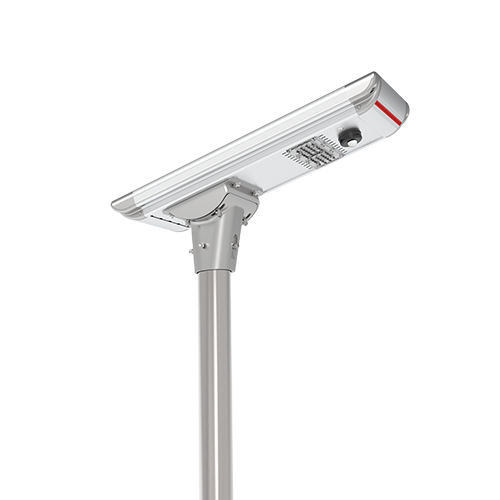NEWS
Welcome to My Blog!
Before we dive into the content, if you’re interested in our products or have any questions, please feel free to visit our Contact Us page on the website. Our team is ready to assist you with inquiries, orders, or any support you may need.
Now, let’s get started on our journey together. I hope you find the content here insightful, engaging, and valuable.
Table of Contents
As urban landscapes evolve, so does the need for sustainable, cost-effective solutions in public lighting. Pole solar street lights have emerged as a leading alternative to traditional grid-powered lighting, offering environmental benefits, cost savings, and efficiency. This guide will explore the advantages, installation processes, and maintenance tips for pole solar street lights, helping you understand why they are a game-changer in outdoor lighting.
Introduction

What are Pole Solar Street Lights?
Pole solar street lights are a type of outdoor lighting system that operates on solar energy. These lights are mounted on poles, with solar panels capturing sunlight during the day to power the light at night. The system works autonomously, reducing the need for grid electricity and lowering energy costs. Solar street lights typically consist of three main components: solar panels, batteries, and LED lights, all integrated to ensure energy-efficient operation.
The Growing Popularity of Pole Solar Street Lights
In recent years, the demand for solar street lights has surged, driven by the global push for sustainable energy solutions. As cities and municipalities strive to reduce their carbon footprint and move towards more energy-efficient practices, solar-powered street lighting is becoming a preferred choice. Moreover, the rise in environmental consciousness and the declining costs of solar technology are accelerating this trend.
Benefits of Using Pole Solar Street Lights
Cost-Efficiency and Energy Savings
One of the most significant advantages of pole solar street lights is their ability to save on energy costs. Solar energy is free, and once the initial installation is complete, there are minimal ongoing costs. A traditional streetlight can consume up to 250 watts of energy, while solar-powered LEDs consume only about 15 to 30 watts. This can result in savings of 75%-80% in energy consumption.
In many cases, the installation of solar street lights results in a return on investment (ROI) within 3 to 5 years. After that, they continue to operate at little to no cost, as they depend on renewable energy sources.
Environmental Impact and Sustainability
Pole solar street lights are eco-friendly because they use renewable solar energy to operate. By switching to solar lighting, cities can significantly reduce their carbon emissions. For example, each solar street light can save about 1.5 to 2.5 tons of CO2 emissions annually. When deployed on a large scale, solar-powered street lights have the potential to reduce millions of tons of CO2 globally, helping mitigate climate change.
Additionally, using solar energy in public infrastructure aligns with global goals for sustainable development and the transition to green cities.
Reliability and Low Maintenance
Pole solar street lights are designed for durability and minimal maintenance. The solar panels typically last for 20-25 years, while the LED lights have a lifespan of over 50,000 hours. These lights are also equipped with motion sensors and smart controllers, ensuring that they only illuminate when necessary, further conserving energy.
Moreover, maintenance is simplified. Regular cleaning of the solar panels and occasional battery checks are the main tasks required to ensure optimal performance. This contrasts with traditional streetlights, which often require expensive repairs and frequent bulb replacements.
How Pole Solar Street Lights Work

The Key Components of Pole Solar Street Lights
Pole solar street lights consist of three primary components:
- Solar Panels: These capture sunlight during the day and convert it into electrical energy.
- Batteries: The electrical energy is stored in a battery, typically lithium-ion or lead-acid, to be used for lighting at night.
- LED Lights: The LED fixtures are highly efficient and provide bright, focused light with minimal energy consumption.
Some systems may also include motion sensors and smart controls that adjust brightness based on pedestrian or vehicle traffic.
How Pole Solar Street Lights Operate
During the day, the solar panels capture sunlight and convert it into energy. This energy is stored in the battery. At night, the energy stored in the battery powers the LED lights, which provide illumination for the street. The system operates autonomously, so no manual operation or connection to the electrical grid is required.
For added efficiency, some systems feature smart dimming or motion sensors, which reduce energy consumption by adjusting the light intensity when no movement is detected.
Installation of Pole Solar Street Lights

How to Install Pole Solar Street Lights
Installing pole solar street lights can be a straightforward process, though it may vary depending on the system and location. The basic steps include:
- Site Selection: Choose a location with maximum sunlight exposure, ideally without any shading from nearby buildings or trees.
- Mounting the Pole: The pole must be securely anchored in the ground, often requiring a concrete base.
- Attaching the Solar Panel and Battery: The solar panel is mounted on top of the pole, while the battery is housed within the pole or at the base.
- Connecting the Components: The solar panel is connected to the battery, and the battery is connected to the LED light fixture.
Factors to Consider During Installation
When installing pole solar street lights, consider:
- Sunlight Exposure: The system needs to be placed in an area that receives adequate sunlight throughout the day to ensure optimal energy storage.
- Pole Height: The pole should be tall enough to provide sufficient coverage and light distribution.
- Safety: Ensure the system complies with local electrical codes and safety standards.
Common Installation Mistakes to Avoid
Avoid these common mistakes to ensure a smooth installation process:
- Placing the solar panel in a shaded area: This will reduce its ability to charge the battery effectively.
- Incorrect wiring: Ensure all connections are secure and weatherproof to prevent power loss.
- Not considering future maintenance access: Ensure there is easy access for cleaning and battery replacement.
Maintenance of Pole Solar Street Lights
Routine Maintenance for Optimal Performance
To keep pole solar street lights running efficiently:
- Clean the Solar Panels: Dust and debris can block sunlight, reducing the amount of energy the panels capture. Cleaning every few months is recommended.
- Inspect the Battery: Check the battery periodically to ensure it’s storing energy effectively. Replace it every 5-7 years.
- Check the LED Light: Ensure the LED lights are working properly and replace them when needed.
Troubleshooting Common Issues
Some common problems include:
- Low light output: This could be due to dirt on the solar panels or a malfunctioning battery.
- Battery not charging: Ensure the solar panel is clean and positioned correctly to receive sunlight.
- Motion sensor not working: Check if the sensor is obstructed or needs recalibration.
How to Extend the Lifespan of Pole Solar Street Lights
By performing regular maintenance and addressing issues promptly, you can extend the lifespan of your pole solar street lights. Also, ensure that the system is protected from extreme weather conditions, which can cause wear and tear over time.
Pole Solar Street Lights vs. Traditional Street Lights

Key Differences Between Pole Solar Street Lights and Traditional Lighting
- Energy Source: Solar street lights are powered by renewable energy, while traditional lights rely on grid electricity.
- Installation and Maintenance: Solar street lights are easier and cheaper to install and maintain since they don’t require complex wiring or electricity access.
- Environmental Impact: Solar street lights reduce carbon emissions, while traditional lights contribute to pollution.
Which One is Better for Your Needs?
Pole solar street lights are ideal for locations with no access to electricity or for those looking to reduce their environmental footprint. Traditional lights are better suited for areas with high traffic, where a constant supply of power is necessary.
Conclusion
Pole solar street lights offer a sustainable, cost-effective, and reliable lighting solution for both urban and rural areas. They provide significant energy savings, environmental benefits, and require minimal maintenance.
With advances in technology and a growing commitment to sustainability, pole solar street lights are set to become an essential part of modern cities. As more innovations in solar energy and smart technologies emerge, solar street lighting will continue to play a crucial role in creating greener, more efficient urban spaces.
FAQ
What are pole solar street lights?
Pole solar street lights are outdoor lighting systems that use solar panels mounted on poles to capture sunlight and power LED lights at night. They operate independently of the electrical grid, providing an eco-friendly and cost-efficient lighting solution.
How do pole solar street lights work?
During the day, the solar panels absorb sunlight and convert it into electrical energy, which is stored in batteries. At night, the stored energy powers the LED lights, providing illumination without the need for grid electricity.
What are the benefits of using pole solar street lights?
Pole solar street lights save energy costs, reduce carbon emissions, and require low maintenance. They are eco-friendly, sustainable, and can be easily installed in remote or off-grid locations.
How long do pole solar street lights last?
Pole solar street lights typically last 20-25 years. The solar panels have a lifespan of up to 25 years, while the LED lights can last for over 50,000 hours. Batteries usually need replacement every 5-7 years.
Can pole solar street lights be used in cloudy areas?
Yes, pole solar street lights can still work in cloudy areas. However, their performance may be slightly reduced. High-efficiency solar panels can still charge effectively even in low sunlight conditions.
Ready to Make the Switch to Solar?
Discover how pole solar street lights can transform your outdoor lighting while saving energy and reducing costs. Contact us today for a consultation or to get started with your installation!

